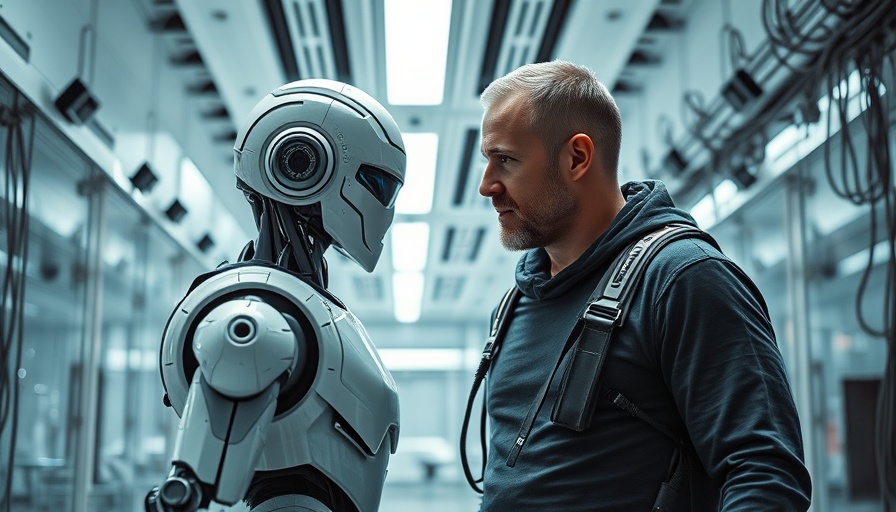
The AI IPO Landscape: A Critical Overview
The recent IPO from CoreWeave marked a significant moment in the AI sector, as it was hailed as the first major IPO of the year. However, the spotlight has quickly shifted to its performance, raising questions about the current state of the AI market. Despite raising $1.5 billion, the stock has struggled since its launch, opening lower than initially expected. The IPO priced shares at $40 instead of the targeted $55, reflecting broader market volatility.
In 'How Did AI's First Major IPO Perform?', we delve into the details of CoreWeave's IPO performance, providing insights that have prompted deeper analysis.
Decoding the IPO Drop: Market Trends or Company Specifics?
One of the primary reasons behind CoreWeave's disappointing IPO is the prevailing market conditions. The NASDAQ index, which reflects the health of tech stocks, had seen a 2.5% drop that day, contributing to broader investor anxiety and skepticism towards risk assets, including tech IPOs. Investors often view such drops as indicative of heightened uncertainty, leaving companies like CoreWeave to navigate treacherous waters. CoreWeave's struggles may not solely point to its weak fundamentals but are also symptomatic of a nervous market environment.
Understanding AI Infrastructure Demand Amidst Skepticism
In the context of these challenges, the narrative surrounding an AI bubble has resurfaced. Critics argue that CoreWeave's IPO failure may signal a market correction or overvaluation in the AI infrastructure sector. Conversely, the company's co-founder, Brandon McB, insists that the demand for AI remains robust despite intermittent discussions of a bubble. This dual narrative illustrates the complexities of the existing AI landscape—one that continues to attract strong investment while grappling with market pressures.
The Risks of Concentrated Revenue Streams
CoreWeave faces significant operational risks, particularly due to its concentrated customer base. With Microsoft accounting for 62% of its revenue, the vulnerabilities are evident, especially as Microsoft has recently pulled out of lease agreements. This dependence not only jeopardizes financial stability but also highlights the broader risks associated with numerous tech firms staking their fortunes on singular large clients.
Investor Insights: What This Means for Future IPOs
For potential investors and business owners, this IPO serves as a cautionary tale. The correlation between strong demand in AI and the actual market performance of its key players illustrates the high-stakes nature of tech investments. As observers are quick to draw parallels between CoreWeave's failure and the broader AI landscape, it's essential for prospective business owners and investors to weigh these risks carefully. Understanding the financial underpinnings and market dynamics will be crucial as they consider diving into this burgeoning sector.
The Path Ahead for AI Companies and Startups
The ripple effects of CoreWeave's IPO extend well beyond its fortunes. It's essential for emerging AI businesses to develop resilient business models that don't rely excessively on a few customers. Forward-looking companies should focus on diversifying their revenue streams and understanding how to navigate periods of volatility effectively. The path forward should be grounded in strategic foresight, innovation, and adaptability.
While CoreWeave’s IPO has sparked critical discussion, it also presents an opportunity for entrepreneurs and established companies to evaluate their strategies and identify areas for growth. As AI technology continues to evolve, those who can adapt will find unique opportunities amid the rapidly shifting landscape.
Given the rapid changes in the AI sector, now is the perfect time for business owners to start leveraging AI technologies to enhance their operations and offerings. Don’t miss out on the transformative potential of AI. START USING AI NOW!
 Add Row
Add Row  Add
Add 




Write A Comment